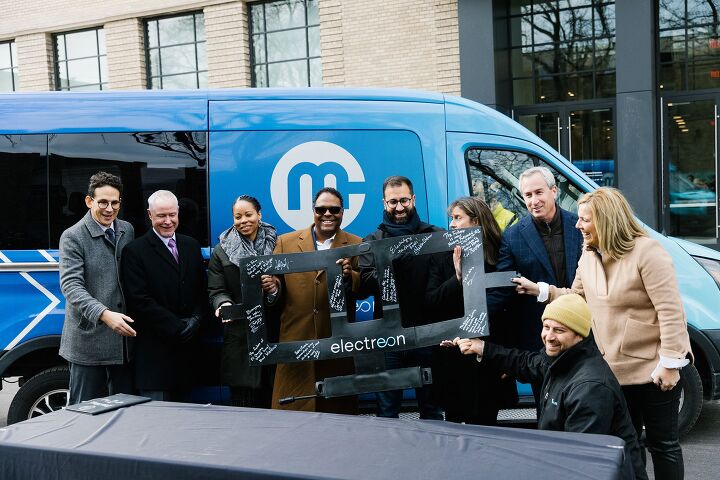
Detroit now has a quarter-mile length of roadway with the ability to charge properly equipped electric vehicles as they drive. While similar programs have been pioneered in Europe, Detroit is the first and only city to do so in the United States. Governor Gretchen Whitmer offered her support when the plan was announced in 2021.
The Michigan Department of Transportation (MDOT) partnered with Electreon Wireless to complete the task as part of a five-year commitment to develop the electric road system (ERS) and expand it around the state. Early plans called for installation on Michigan’s most scenic roadways. But there has been mild pushback from local residents suggesting that this might just be a waste of money.
Considering the general state of Detroit roads, those concerns may be warranted. But city leadership doesn’t want to spoil the grandeur of what’s a very interesting concept.
Leveraging technology from Electreon, MDOT has installed a section of road with inductive-charging coils that will charge electric vehicles (equipped with Electreon receivers) on the go. The electrified slab is located on 14th Street, between Marantette and Dalzelle, right near the trendy Corktown neighborhood and the former ruins of the Michigan Central Station Ford is actively restoring. But it’s hardly on a major thoroughfare and just barely long enough to serve as anything other than a proof of concept.
In fact, the road is primarily going to be used as a testing ground for the relevant technologies. But there are plans to open it to public use within a few years, according to both MDOT and city officials.
Electreon, is an Israel-based firm focused on wireless charging solutions for electric vehicles. The company has launched similar programs thanks to government contracts it has in Israel, Sweden, Italy, and Germany. The company is also a Michigan Central Newlab partner which — along with Google, Ford, Newlab, and The City of Detroit — is trying to expand “mobility innovation ecosystems.”
“This milestone stands as a testament to our collaborative efforts with the State of Michigan and MDOT, the City of Detroit, Michigan Central, Ford, Mcity, Jacobs, Next Energy, DTE, and others. Alongside Michigan’s automotive expertise, we’ll demonstrate how wireless charging unlocks widespread EV adoption, addressing limited range, grid limitations, and battery size and costs,” stated Stefan Tongur, Electreon vice president of business development. “This project paves the way for a zero-emission mobility future, where EVs are the norm, not the exception.”

The road itself is said to be totally safe for pedestrians and vehicles not equipped with the required charging hardware. Only vehicles using Electreon receivers can take advantage of charging segments. Copper coils beneath the road transfer electricity through magnetic fields, charging the vehicle’s battery in a manner similar to how inductive phone chargers function.
“The technology is smart,” Tongur told the Associated Press. “The technology knows who you are — you’re a verified and authentic user — you can get a charge.”
It’s an interesting concept for certain. But one wonders about its true utility and overall cost. Detroit may play host to influential companies with deep pockets. But the city itself isn’t exactly flush with cash and has struggled with reinventing itself. While meaningful strides have been made, balancing the budget remains tricky and this looks like a costly project to upscale.
While Governor Whitmer originally envisioned an inductive charging highway loop situated along tourist destinations, ensuring future travelers driving EVs could tour the Great Lakes without stopping, the more likely scenario involves years of testing with Detroit eventually trying to expand localized charging. Thus far, MDOT has only said it would “begin seeking bids” in 2024 to rebuild part of US-12 (Michigan Avenue), which will see additional inductive charging installed. Unfortunately, it seems like there needs to be a lot of coil-equipped roads for the concept to offer any real benefit to drivers.
Inductive phone charging certainly seemed like a novel convenience. But it is slower to charge devices than simply plugging them in and requires they stay put on a pad where they’re basically impossible to use. Fortunately, Electreon says its design works regardless of whether they’re parked or in motion — though it did install a couple of inductive charging stations in front of Michigan Central Station that are designed for stationary vehicles.
However, the eventual mile of road it has planned will still be maintained by the city and that might be a tall order. U.S. roads have been in rough shape for a while but Detroit has some really nasty segments in desperate need of care.
This is further complicated by the Michigan climate. Harsh, damp winters are absolutely brutal on roads, as the moisture creeps into cracks daily only to expand as the cold converts it into ice. This, combined with usual traffic, wreaks havoc on pavement. Michigan roads also tend to be salty during snowy months, encouraging the underside of vehicles to rust prematurely. One wonders how that might impact Electreon hardware that will need to be equipped beneath EVs.
Then again, the above sounds like an idyllic environment to torture test the systems involved. But going full scale with inductive roads sounds like something we’ll be waiting years on before testing wraps up. Assuming those tests are successful, it’ll probably be several more years before any national effort or standardization takes place.

[Images: Michigan Central; MDOT]
Become a TTAC insider. Get the latest news, features, TTAC takes, and everything else that gets to the truth about cars first by subscribing to our newsletter.

